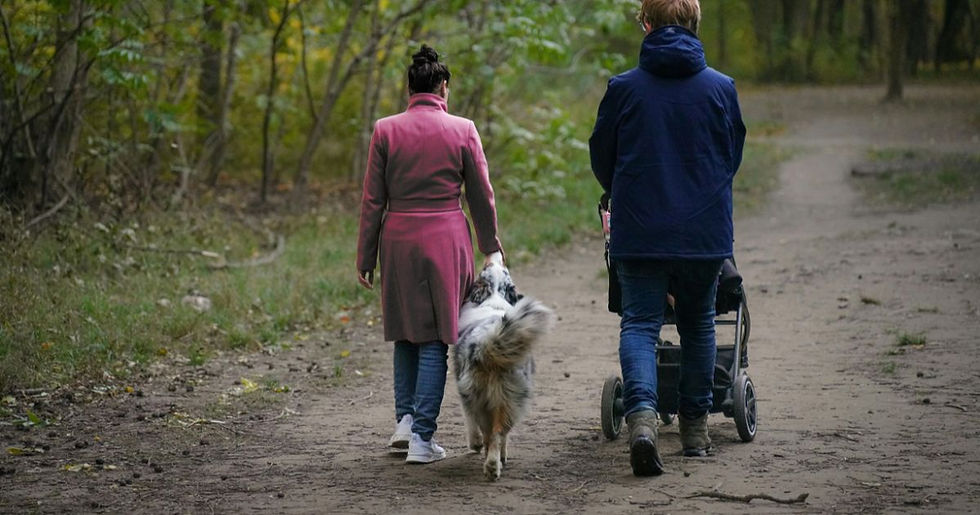How to Talk to Your Family About End-of-Life Decisions for Your Pet
- Dr. Liz Munro

- Oct 6
- 4 min read

Making end-of-life decisions for a beloved pet is one of the most emotional and difficult responsibilities an owner can face. In multi-person households, the process can become even more complex—balancing individual feelings, differing opinions, and the pet’s needs.
Whether you’re preparing for in-home euthanasia or considering palliative care, open and compassionate communication is essential. This guide offers sensitive, practical advice for navigating these discussions as a family.
Contents
Why These Conversations Are So Hard
Pets are family members, and saying goodbye can be devastating. Each person in your household may have a different relationship with your pet and may be at a different stage of readiness when it comes to discussing loss. Some may focus on prolonging life at all costs, while others may prioritise comfort and quality of life.
Avoiding the conversation doesn’t make the reality easier. Instead, it can lead to confusion, guilt, or regret when decisions must be made quickly. Starting early—before a crisis—allows space for reflection, understanding, and consensus.
Signs It May Be Time to Talk About End-of-Life Care
It’s time to initiate a conversation when your pet begins to show signs of significant decline or when a chronic condition worsens. These signs may include:
Loss of appetite or refusal to eat for more than 24–48 hours
Chronic pain that no longer responds to medication
Difficulty standing, walking, or toileting
Frequent vomiting or diarrhoea
Withdrawal from family interactions
Significant weight loss or muscle wasting
Confusion, anxiety, or disorientation
If your pet is under veterinary care, discuss their quality of life with your vet. They can offer insights and help you understand what to expect in the coming weeks or months.
Starting the Conversation with Sensitivity
Bring up the topic at a calm, private time—not in the middle of a crisis or when emotions are high. Taking a walk with a family member can be a good opportunity to talk with less confrontation, openly and without distraction. Frame the conversation with compassion and clarity, such as:
“I’ve noticed some changes in [pet’s name] and I think it’s time we talk about how to keep them comfortable.”
“I’ve been feeling worried about [pet’s name] and I think we should speak openly as a family.”
“I don’t want us to make decisions in panic—can we talk about what we’d want when the time comes?”
Give each family member space to express their thoughts and concerns. Emphasise that the goal is to ensure your pet’s dignity and comfort—not to rush a decision.
Managing Different Views and Emotions
Disagreements are common, especially when everyone is grieving in their own way. Some may be in denial, while others may be more pragmatic. Try to:
Listen actively and without judgement. Avoid interrupting others to allow their full thoughts to be voiced
Avoid blame or ultimatums—remember, everyone is coping differently
Focus on your pet’s needs, rather than individual preferences
Include input from your vet, which can help guide decision-making with medical facts
Consider writing down shared goals, such as “keeping [pet’s name] comfortable and pain-free”
Try to agree on signs from your pet that would trigger a decision for euthanasia
Bringing in a neutral perspective—such as a vet or pet hospice professional—can ease tension and provide reassurance.
Involving Children and Teenagers
Children process loss differently at different ages. While it’s tempting to shield them, age-appropriate honesty builds trust and helps them grieve healthily.
For younger children:
Use clear language (e.g. “She is very sick and her body is stopping working”)
Avoid euphemisms like “put to sleep” unless explained carefully
Reassure them it’s okay to feel sad, confused, or angry
For teenagers:
Involve them in the discussion and decision-making where appropriate
Acknowledge their bond with the pet and validate their emotions
Be honest about the reasons behind the decision and encourage them to say goodbye in their own way
Pets often serve as emotional anchors for children—especially during difficult life phases—so their grief may be intense and long-lasting.
Working Together to Make the Best Decision
End-of-life decisions are rarely clear-cut. What matters most is that they are made with love, honesty, and the best interests of your pet in mind. As a family, consider:
Your pet’s current quality of life
What brings them joy—and whether those moments are still possible
How much suffering they may be experiencing
Whether in-home euthanasia would allow a more peaceful goodbye
What kind of aftercare feels right for your family
When everyone feels heard and the pet’s needs are kept at the centre, even the hardest choices can feel more peaceful and united.
FAQs
What if my family can’t agree on what to do?
This is common. Try focusing discussions on your pet’s comfort rather than personal emotions. Bringing in your vet or a neutral third party can help reach consensus with compassion.
Is it okay for children to be present for euthanasia?
This is a personal decision. Some children find closure in being present, while others may find it overwhelming. Discuss it as a family and allow your child to choose, with support.
How can I support my family emotionally?
Make space for grief and talk openly. Consider grief resources, memory-making rituals, or support from pet loss counsellors. Everyone processes loss differently—there’s no “right” way.
What if I feel guilty about the decision?
Guilt is a natural part of grief, especially when you love your pet deeply. Remind yourself that the decision was made with kindness and in your pet’s best interest. You're giving them peace, not giving up.
Can we all be there during in-home euthanasia?
Yes. One of the benefits of in-home euthanasia is that it allows the whole family to say goodbye in a peaceful, familiar setting. You can create a comforting space with soft bedding, favourite toys, and loving words.















